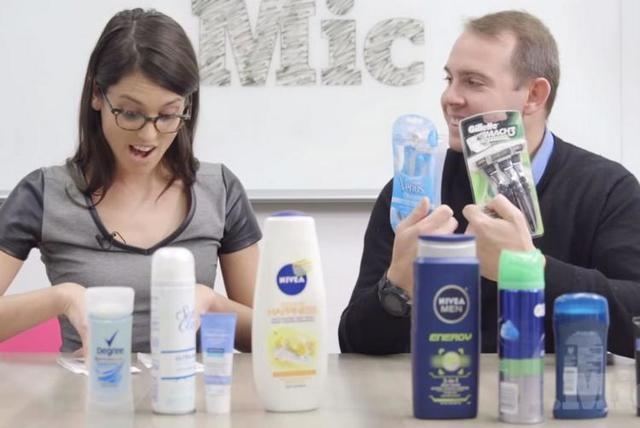How the ‘pink tax’ is ripping women off
![]() Does packaging an item in pink turn it into a luxury item? Some think so.
Does packaging an item in pink turn it into a luxury item? Some think so.
As if women weren’t already making less money, 78 cents for every dollar a man earns because of the wage gap, the “pink tax” may be overcharging women at the store too.
Studies show that women are paying more for everyday items and services, like deodorant, razors, shaving cream and dry cleaning, than for comparable items marketed to men.
Some manufacturers of shampoo and deodorant said the reason their products for women cost more was because they cost more to produce than the men’s versions, The Huffington Post reported.
A 2011 study by the University of Central Florida found that deodorant, which only differed by scent between men’s and women’s products, was on average 30 cents more expensive.
“It’s a similar case for most products marketed to women, such as razors and shampoo, which smell different and look different but at the end of the day serve the same purpose as scent-less, glitter-less versions,” according to the Huffington Post.
This unfair pricing also applies to health care, import taxes and even medicine. The study by the University of Central Florida found that Excedrin Extra Strength and Excedrin Menstrual Strength — the same ingredients with a different name and package — were priced differently, too.
This isn’t a new conversation — women have been talking about this for years. Slate ran an article in 1998 about how dry cleaners offer to clean and press men’s shirts for $1.65 but charge $5.25 to do the same for a women’s blouse.
This issue resurfaced in November when a French feminist group began collecting signatures to bring attention to unfair pricing policies at the French retailer Monoprix that were costing women extra, The New York Times wrote in an editorial.
While the pink tax may be real, there are some unexplored factors that may explain the phenomenon, St. Lawrence University economics professor Steven Horwitz wrote for the Foundation for Economic Education.
The products may be made differently or the consumers may place different subjective values on them. For example, women may pay more than men to get their haircuts perfect rather than acceptable, Horwitz explained.
“There may be differentials that we can’t explain and we might tentatively conclude that there appears to be discrimination,” he wrote. “But that means we have to keep looking for alternative explanations. The differentials are unexplained — but not necessarily unjust.”
Elizabeth Plank in an article for Mic suggested women start circumventing the pink tax by purchasing products marketed to men.
“Until companies fix this unfair sexist practice, you won’t find me in the women’s aisle,” she wrote. “If I smell “like a man,” you can blame the system.”Watch this video created by Mic below to learn more about the pink tax.



















